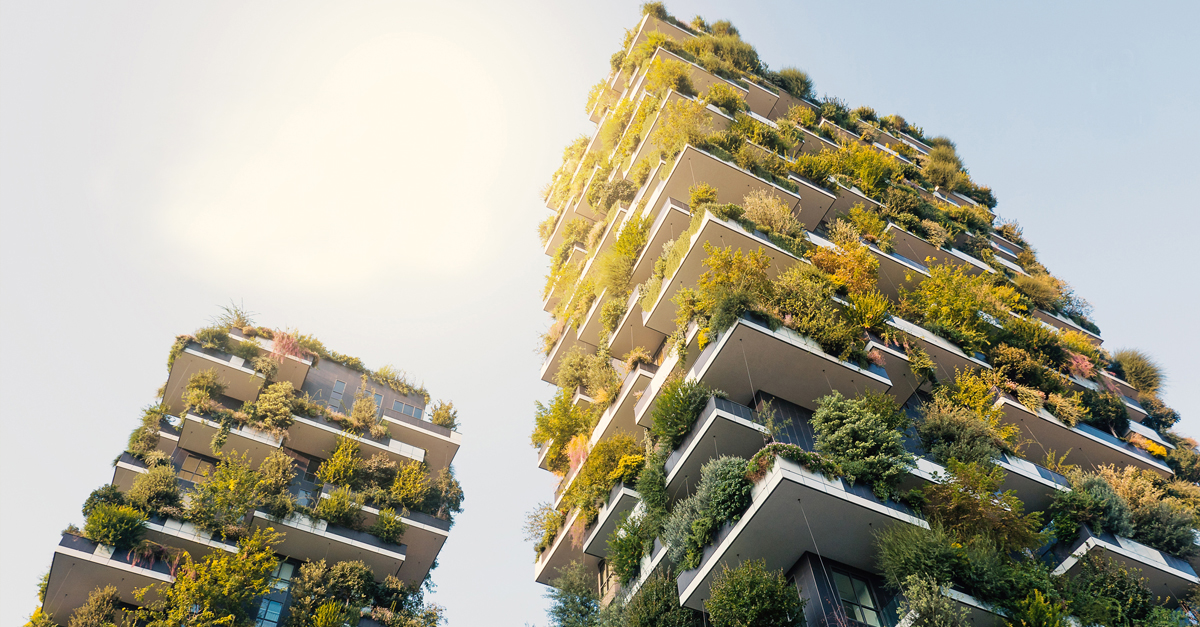
For hotels, going green begins with going digital
- Hudini
King-sized beds, heated Olympic-sized pools, and exotic food flown in from around the world – luxury hotels conjure up images of extravagance. But as times (and temperatures) change, the hospitality industry as a whole is recalibrating its practices to become more sustainable. The clock’s ticking. Tourism accounts for 8-11% of greenhouse gas emissions. Hotels produce 1% of the world’s carbon emissions every year according to the UNWTO; their operations consume energy 24×7, generating a higher carbon footprint than other building types.
The hotel sector is also expected to grow significantly over the next decades, drawing attention to the sustainability of conventional industry practices. The UN and the ITP (International Tourism Partnership) estimate that the hospitality industry must cut its emissions by 66% by 2030 and 90% by 2050 so that growth does not result in a parallel rise in carbon emissions.
Now, here’s the good news – within the challenge lies the opportunity. If the hotel industry can become more sustainable, it will have a far-reaching impact in keeping temperature change below the Paris Agreement’s 2°c threshold. The first tool that hotels are reaching for in order to achieve this, while staying profitable, is green technology.
Sustainability and competitiveness can co-exist
Hotels need to pivot to become more sustainable, and fast. But if you were in charge of this overhaul, where would you start? Properties that are being newly developed or renovated can make changes in their infrastructure, favoring materials such as reclaimed wood and recycled plastic. However, 80% of the world’s existing hotel buildings are expected to be in use even 30 years from now. The World Bank recommends retrofitting them to a green standard and encourages banks to finance these projects through the Hotels Green Revitalization Program.
The push to go green isn’t just coming from institutions and the industry; hotel guests are also factoring in eco-friendliness while booking their stay. Booking.com launched the Sustainability Badge after research showed 78% of travelers were searching for more eco-friendly hotels.
Technological modifications will play a decisive role in making hotels more energy-efficient. Sustainable technology can also improve profit margins by lowering utility costs, reducing wastage, improving operational efficiency and attracting more guests who prioritize sustainability. Best of all, they can help conserve the environment in which the hotel operates for future generations.
The transition to green technology is easier than you think
The innovative features of hospitality apps like Hudini can help tackle the climate challenge. For example, a digital check-in process eliminates the need for physical forms, thereby saving paper. In-room dining menus, laundry lists and feedback forms have also been replaced with a touchscreen interface. With hospitality technology like Hudini, which captures all the touchpoints of the guest journey on a single digital platform, hotels can reduce paper consumption to the bare minimum.
Guests can select the ‘Away’ mode on the app when stepping out of their rooms, allowing the lighting and air conditioning to adjust accordingly. With the tap of a button, they can also opt out of services they don’t require – daily housekeeping, extra towels, bottled water, tissues, newspapers and so on. This simple feature can considerably reduce wastage and include guests in the practice of sustainability.
Hotel apps generate data that can also minimize food waste. By analyzing which dishes are least ordered or frequently returned to kitchens, hotels can alter menus and purchase lists. Some properties are going the extra mile by using AI-based smart meters to monitor the quantity of ingredients used. While hotels pride themselves on offering guests the best in international cuisine, transporting authentic ingredients negatively impacts the environment. Instead, sourcing ingredients locally can decrease food waste and the carbon footprint.
Hotels are also deploying occupancy sensors in rooms and public spaces so that HVAC systems and lighting adjust to the number of people in the room. LED bulbs consume 80% less energy and are an easy switch that hotels can make. Water management plans are also being reevaluated. In rooms, aerated shower heads and low-flow toilets are being introduced, while guests are given the option to recycle towels and linen for the duration of their stay.
Some infrastructural changes such as switching to renewable sources of energy can be implemented in months without interrupting operations. These include the installation of solar panels and CHP technology that transforms the heat generated by the hotel’s power systems into thermal energy. While charging stations for electric vehicles require an investment, hotels can realize the ROI in 4-5 years. As the EV market booms, the charging stations could also attract more customers to the hotels’ cafes, where commuters might grab a quick meal or coffee while charging their vehicles.
The green technology that’s ‘good-to-have’ now will soon become ‘must-haves’ as we move closer to 2030. Hotels that stay ahead of the curve will be rewarded with quicker ROI, certifications and customer goodwill. Most importantly, they will have contributed more to conservation efforts that every industry and individual must make to fight climate change. Meeting that target will be its own reward.
Engage, Elevate.

Join our mailing list
Enter your email address


